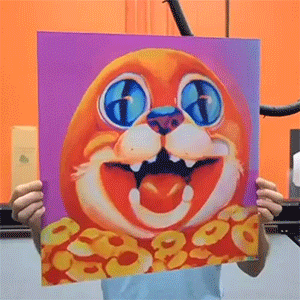Complete Guide to Lenticular 3D, Flip & Animation Effects
Each approach serves different creative and commercial objectives, and proper file preparation is the critical step to achieving optimal results - whether creating dimensional depth, fluid animation, or dramatic scene changes. This comprehensive lenticular resource guides you through the technical requirements and creative considerations for all three primary lenticular techniques.
How to Photograph for 3D Lenticular
3D lenticular creates genuine spatial depth, making objects appear to float in front of or recede behind the print surface - ideal for product displays, fine art, and architectural visualization where dimensional presence matters.
Preparing Motion/Animation Files
Motion/animation lenticular brings static prints to life through frame sequences that play as viewers pass, perfect for capturing attention in high-traffic environments without requiring power or screens.
File Setup for Flip Lenticular Effects
Flip lenticular delivers instant transformations between distinct images, excelling at before-and-after reveals, hidden messages, and visual storytelling that engages viewers through interaction.
Choosing Your Approach
Your creative goals, source artwork and technical constraints will typically determine which lenticular technique best serves your project. Many successful lenticular prints combine techniques, using 3D depth with subtle animation, or incorporating flip reveals within dimensional compositions, though this is often after exploring each method individually. To see a range of lenticular projects created through the years check out our comprehensive guide to lenticular printing or for more contemporary uses of lenticular visit Parallax Printing on Instagram.




